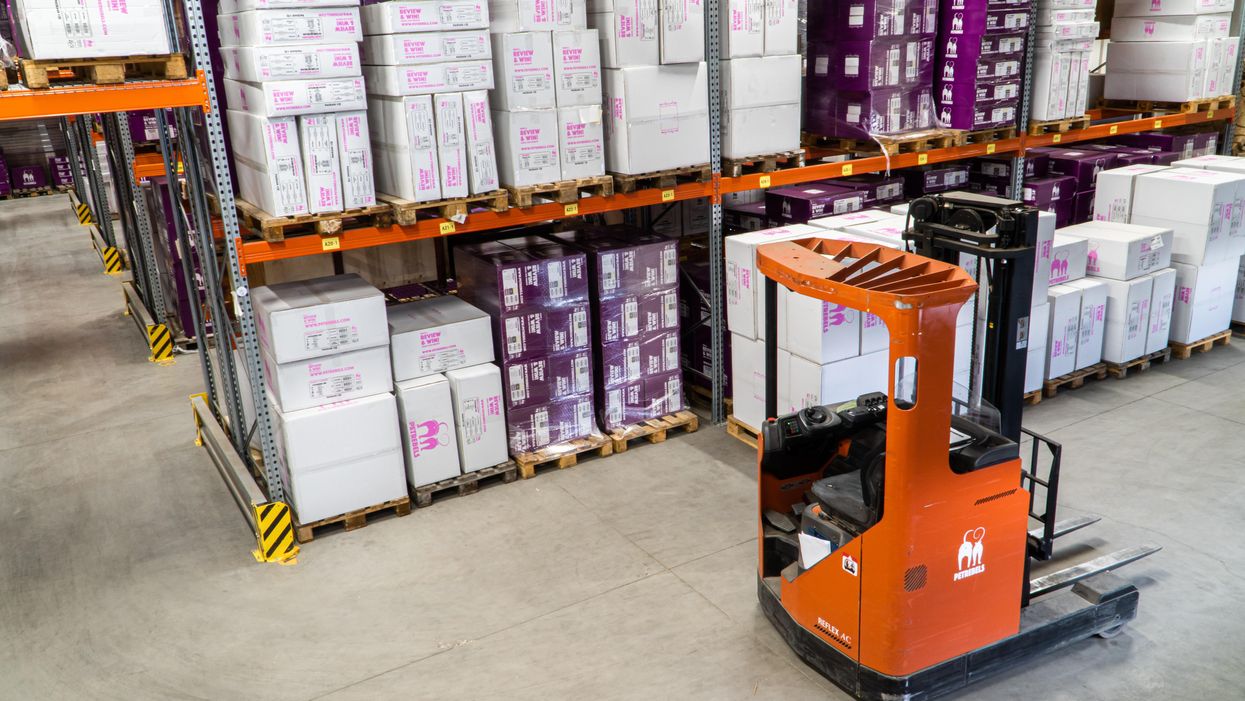Operations
21 June 2022
Are big retail's inventory builds a concern for DTC brands?
Bainbridge Growth offers a look at the consumer categories showing strength amid shifts in demand.

Bainbridge Growth offers a look at the consumer categories showing strength amid shifts in demand.

This post originally appeared on the blog of Bainbridge Growth. It is being republished by The Current with permission.
In recent weeks, many financial headlines have blared warnings on growing inventory levels across the major US retailers. Since Target and Walmart reported earnings in mid May, sentiment on the sector and the broader economy has become notably concerned about shifting buying patterns and demand from lower-earning households. Management teams at these companies have attributed the growing inventories to their intent to increase SKU availability in reaction to broad shortages seen earlier in the pandemic. Increased freight costs also are represented within the inventory dollar amount carried on the balance sheet, a result of higher ocean-borne shipping rates and higher use of air freight.

Inventory-to-sales ratios. (Source: Wall Street Journal)
Some retailers like Target noted that inventory at the end of Q1 2022 skewed towards quarantine-friendly categories that are no longer seeing strong performance. Target CEO Brian Cornell made the decision to deeply discount home goods, appliances, televisions and casual clothing. This move lowered Target’s full year gross margin, sending operating profit margins down from about 10% to the mid single digits. At their recent annual investor presentation, Walmart US leader John Furner called out that 20% of the inventory they’re now carrying are items they “wish they did not have.” Both Target and Walmart management called out Q2 and Q3 as the timeframe where excess inventory would be discounted.
While DTC companies may have less of a concern about cluttering up physical store spaces with out of season items, it is key to observe what product categories are seeing strength so that adjustments can be made. We dug into the several companies in the Bainbridge DTC index, looking into key product categories at companies that also have at least 3 to 5 years of data. We have focused on inventory as a share of sales and gross margin trends for these brands, and gathered extra detail from the most recent earnings reports to determine the primary drivers.

Note: Graphs Displays Ending Q1 Points in Time Only. (Chart by Bainbridge Growth)
The furniture and home goods category is clearly building inventory with Bainbridge DTC index members Lovesac and Purple Innovation showing increases in inventory as a % of sales when compared to pre-pandemic. Lovesac management touted their differentiated product and word of mouth reliant marketing model, and mentioned that their mid and high-end offerings continue to perform well. The company reiterated its guidance even as there was a clear slowdown in their entry level portfolio that caters to lower income customers. Lovesac CEO Shawn Nelson referred to their growing inventory as non-seasonal with a small number of SKUs that sell year round, positioning them well to support a growing customer base. Their margins have been stable, with no intent to increase discounting to meet guidance and no resistance to price increases.
The slowness in home goods is especially impactful to commoditized products like mattresses. Purple Innovation’s inventory jumped to 18% of Q1 2022 annualized sales, more than double any Q1 in the last 5 years. The company struggled in Q1 2022 as sales declined 23% YoY compared against a stimulus-aided Q1 2021. Management reduced full year 2022 sales guidance by 18%, cut headcount, and reduced cost per click advertising. Softness came from deterioration in ecommerce sales (-36% YoY) as Q1 progressed reflecting a “general rationalization” of a quarantine friendly category combined with a shift to in store buying. Management also called out customer resistance to price increases in the quarter. Company gross margin declined in Q1 primarily driven by a large shift toward wholesale and away from eCommerce (67% of mix down to 60%).
Another category that has been challenged is casual wear which many people gravitated towards during the pandemic. This includes athleisure wear, hoodies, jogging pants, and comfort footwear. Lululemon has one of the most pronounced YoY increases in inventory throughout the Bainbridge Index, with inventory jumping 74% YoY while sales grew at a rate of 32%. Lululemon’s CFO mentioned they are focused more on matching their 3YR compounded annual growth rate of sales vs inventory. Q1 20 is elevated for many companies as the March 2020 period was notably weak for discretionary consumer demand. Lululemon has seen one of the most impressive sustained growth stories in 2022, as the company “saw no lift from Q1 2021 stimulus” so sales growth is actually accelerating in 2022. Supporting this growth in store and online will require higher inventory levels (guidance is inventory YoY growth peaks in Q2, and will drop in H2 2022).

Note: Graphs Displays Ending Q1 Points in Time Only (Graph by Bainbridge Growth)
Oxford Industries’ Tommy Bahama brand saw extremely strong performance in Q1 2022, demonstrating another sign that branded casual apparel is still performing well. The brand grew 46% YoY, versus the total company rate of 33% (Tommy Bahama is 64% of total Oxford sales). The brand’s very prominent orientation towards vacation and linen wares has boosted its sales in the women's segment, as demand shifts from casual leggings to higher priced occasion dresses. All channels remained in growth mode as ecommerce grew 20% (25% of sales) against retail store sales of 49% (39% of sales). Oxford raised its full year EPS guidance by 11% on improvements in sales and gross margin and has increased their inventory to a five-year high to support their rapidly improving outlook.
While broad consumer demand remains strong, it is safe to conclude that the lower end of the income spectrum is seeing pressure from rising gas and food prices. Target and Walmart cater to that income segment and obviously have an immense range of products, therefore carrying more risk of abrupt changes in customer buying patterns. As they discount these products, it remains to be seen in Q2 and Q3 how this will affect margins of online DTC players. DTC brands that are least exposed to these inventory buildup trends are those with relatively narrow and differentiated product portfolios, loyal ecommerce customers, and a mix toward upper middle income earners that are not stimulus reliant.
On the Move has the latest from Amazon, Lovesac and more.
Ryan Cohen is executive chairman of GameStop. (Photo by Flickr user Bill Jerome, used under a Creative Commons) license.
This week, leadership is changing at GameStop, Sorel and Beautycounter. Meanwhile, key executives are departing at Amazon, Wayfair and Lovesac.
Here’s a look at the latest shuffles:
GameStop announced the termination of Matthew Furlong as CEO on Wednesday. A brief statement did not provide a reason for the firing.
With the move, Chewy founder and activist investor Ryan Cohen was named executive chairman of the video game retailer. Cohen will be responsible for capital allocation and overseeing management.
It came as the company reported a 10% year-over-year decline in net sales for the first quarter. Meanwhile, the company’s net loss improved by 62%.
In an SEC filing, GameStop further added this “We believe the combination of these efforts to stabilize and optimize our core business and achieve sustained profitability while also focusing on capital allocation under Mr. Cohen’s leadership will further unlock long-term value creation for our stockholders.”
Cohen was revealed as GameStop's largest shareholder when he disclosed a 10% stake in the retailer in 2020. GameStop went on to become a leading name in the meme stock rise of 2021.
Mark Nenow is stepping down as president of the Sorel brand in order to focus on his health.
After rising to the role in 2015, Nenow spearheaded a transformation of Columbia Sportswear-owned Sorel from a men’s workwear brand to a fashion-focused brand that led with a women’s offering of boots, sandals and sneakers.
“Mark led the brand to sales of $347 million in net sales in 2022,” said Columbia Sportswear CEO Tim Boyle, in a statement. “His leadership has been invaluable to this company, and we wish him the very best.”
Columbia will conduct a search for Nenow’s replacement. Craig Zanon, the company’s SVP of emerging brands, will lead Sorel in the interim.
Beautycounter appointed board member Mindy Mackenzie as interim CEO, succeeding Marc Rey. According to the brand, Rey and the board “mutually decided to transition to a new phase of leadership for Beautycounter.”
McKenzie, a former executive at Carlyle, McKinsey and Jim Beam, will lead the company as it conducts a search for a permanent CEO. Additionally, former Natura & Co CEO Roberto Marques will join Beautycounter’s board as chair.
As part of the transition, Nicole Malozi is also joining the company as chief financial officer. She brings experience from Tatcha, Nike, and DFS Group Limited.
Melissa Nick, a VP of customer fulfillment for North America at Amazon, will leave the company, effective June 16, CNBC reported. Nick joined the company in 2014, and oversaw a region that included nearly 300 fulfillment centers. After doubling its supply chain footprint during the pandemic, Amazon recently reorganized its fulfillment operations to take a regional approach, as opposed to a national model that often resulted in items shipping across the country.

Jon Blotner (Courtesy photo)
Steve Oblak will retire from the role of chief commercial officer at home goods marketplace Wayfair. With the move, Jon Blotner will be promoted to chief commercial officer.
"Steve has served as a critical part of our leadership team and played a pivotal role in Wayfair's growth, helping us grow from a $250 million business when he joined to $12 billion in net revenue today,” said Wayfair CEO Niraj Shah, in a statement. “He oversaw countless milestones, from helping to launch the Wayfair brand as we brought together hundreds of sites into a single platform, to launching new categories, business lines, and geographies while overseeing our North American and European businesses, to leading our debut into physical retail.”
Blotner previously oversaw exclusive and specialty retail brands, as well as digital media at Wayfair. Before joining the company, he served as president of Gemvara.com prior to its 2016 acquisition by Berkshire Hathaway.
Furniture retailer Lovesac said Donna Dellomo will retire as EVP and CFO, and move to an advisory role, effective June 30. Dellomo was with Lovesac for six years.
Keith Siegner was appointed as the next EVP and CFO. He brings experience as CFO of esports company Vindex, as well as executive roles at Yum! Brands, UBS Securities and Credit Suisse.
Additionally, Jack Krause will retire from the role of chief strategy officer, effective June 30. His responsibilities will be divided between CEO Shawn Nelson and president Mary Fox.
“Since joining Lovesac, Jack has played an instrumental role in transforming the Company into a true omni channel retailer by helping expand our physical touchpoints and digital platform as we continue to disrupt the industry,” said Nelson, in a statement.
The National Retail Federation announced the addition of five new board members. They include: